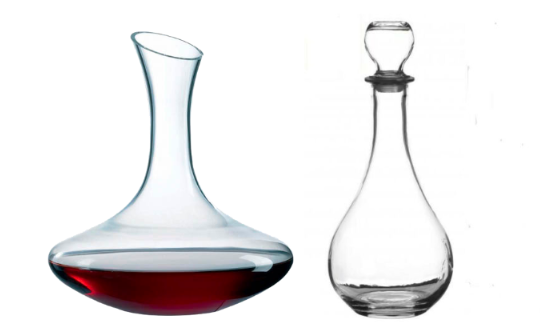Aeration
What is wine breathing ?
Breathing wine means giving it air to breathe after uncorking the bottle. Breathing also takes place through the cork when the wine is in the cellar, before the bottle is opened. This process is necessary to take full advantage of the wine's aromas. Oxygenation and aeration are also synonymous terms.
Why should we let our wine breathe?
Letting your wine breathe means putting it in contact with oxygen so that its aromatic bouquet can open up and reveal all its flavours when tasted. Oxygen reduces the astringent aspect associated with tannins and the acidic note of the wine, to the benefit of its aromas (fruity, floral, woody, spicy, mineral).
Inside the bottle, the wine breathes. In fact, while it provides a hermetic seal and prevents the precious nectar from spilling out, the cork stopper allows a tiny amount of air to pass through. Cork is the preferred material for corks because of its watertight and elastic properties.
It does not breathe enough in the bottle, which is why it should be left to air out a little longer once the bottle has been opened. If it has not breathed sufficiently, or under the right conditions, a wine will not reveal its full potential when tasted. Oenology is all about patience. If you want to enjoy the full personality of a wine, give it time to open up to you.
Which techniques are used to aerate bottles of wine?
There are several techniques for aerating wine :
- Open the bottle and allow the wine to aerate. This technique ensures slower oxygenation than decanting because the neck is narrow enough for air to pass through.
- Serve the wine in a wine glass and allow it to breathe. The glass can be swirled to encourage the aromas to open up thanks to greater contact with the air.
- Put the wine into a decanter. There are two types of decanter: those for aeration (wide base and flared neck) and those for decanting (narrower base and slender shape). Decanting speeds up oxygenation of the wine thanks to the larger surface area in contact with the oxygen. Decanters for decanting have another advantage: they free the wine from deposits and tannic residues that may have accumulated at the bottom of the bottle over time. Decanters for decanting allow more limited contact with the air than models designed for aeration.
- Use a wine aerator to enjoy a wine quickly. The aerator is an accessory that optimises wine aeration. It allows you to explore the full potential of your bottles, even for an impromptu dinner or spontaneous aperitif, thanks to a precise breathing time adapted to the bottle. An aerator helps you enjoy your youngest wines to the full, or bottles that have been lying dormant in the cellar, waiting for an event to celebrate.

Which wines should be aerated?
All types of wine - whites, reds, rosés and even champagne - need to breathe to open up and let you enjoy their full potential in terms of taste and smell. Aeration of wine is beneficial, as long as it is carried out according to the rules of the art.
How long should a wine breathe before tasting?
When is the best time to open a bottle of red or white wine? It all depends on the type, age and profile of the wine to be tasted. Each wine reacts differently to oxygen and requires varying amounts of aeration. A wine that has been aerated too much loses its character. A wine that has not breathed in enough remains 'flat', its aromas not having been released. Some precautions should also be taken to avoid damaging an old wine, such as using a decanter. These narrower decanters allow the sediment from old vintages to sink to the bottom, without the wine taking in too much oxygen.
In terms of wine aeration, there are no hard and fast rules. The easiest way is to ask a wine cellar for advice or use an aerator wich suggests an aeration time based on the label.

Aveine's tip
Some wines need to breathe before tasting if you want to enjoy them to the full; this is the case for wines with a high concentration of tannins.
